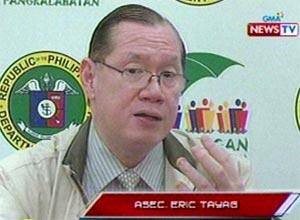HIV-AIDS cases in PHL to spike five-fold before Aquino's term ends — DOH

TAGAYTAY, Philippines — Some 45,000 Filipinos may be infected with the HIV-AIDS before the Aquino administration ends in 2016 if the government will not act to contain the spread of the dreaded disease.
The warning came from Department of Health Assistant Secretary Enrique Tayag, who said the total number of reported and unreported cases would be at an all-time high by 2015, since the government started tracking the spread of the disease in 1984.
"We estimate that from the [current] less than 10,000, there could be a five-fold increase in the number of people living with HIV before President Aquino's term ends," Tayag said at media seminar on reducing stigma and discrimination in HIV-AIDS.
He said latest available data in 2008 showed that the estimated number of HIV-AIDS cases in the Philippines "was between 6,000 and 11,000." Just last March, the total number of recorded cases was already at 6,498 — 483 of them new cases.
Data this year on the DOH's HIV testing on people considered highly at risk of the virus from 10 sentinel areas showed Cebu with the relatively high HIV-AIDS prevalence rate. Around 5.5 percent of the female freelance sex workers (FFSW) who underwent the exam tested positive for the virus, the highest among the sentinel sites.
In Pasay City, the prevalence rate among tested MSM (men who have sex with men) was at 5.6, the highest among the 10 sites, followed by Cebu with 4.7.
Tayag said while four to five HIV-AIDS cases are reported daily since 2010, the prevalence rate of the virus in the country remains below 1 percent - lower than in most countries.
Earlier, the DOH has cited studies showing that the "doubling time" – or the number of years it takes for infected individuals to become twice as many – has gone from 10 years in the 1990s to just one year in 2009.
Tayag also stressed that the effects from any government intervention to mitigate HIV-AIDS infection only get felt between three and five years, meaning the current ballooning figures could only be blamed to previous years when Aquino was still not president.
However, Tayag refused to categorically pin the blame on Aquino's predecessor, Gloria Macapagal-Arroyo. "I'm not pinpointing any administration. I am just saying that the Aquino administration has the opportunity to reduce this trend."
"Puwede pa namang ma-reverse ito (This could still be reversed)," said Tayag, who is also chief of the DOH's National Epidemiology Center.
'Scare tactic'
Tayag admitted that the "alarming" trend has prompted the DOH to step up its campaign against the deadly disease to the point that it has shifted to scare tactics. [See related: Govt seeks private, labor sector help in war vs AIDS]
"Tinatakot na namin ang lahat ng indibidwal sa bansa laban sa HIV. Ito ay hakbang para sabihing hindi kayo invincible at exempted sa virus," Tayag said as he urged Filipinos to undergo regular checkups.
Although Tayag said it is not common practice, he advised returning overseas Filipino workers — who are considered "vulnerable" to the virus — to undergo HIV testing to ensure they did not contract the virus abroad.
Tayag said under current policy, OFWs undergo HIV testing not when they return to the Philippines but only when leaving the country because it is a pre-employment requirement.
Dr. Ofelia Monzon, pioneer of HIV-AIDS research in the Philippines and founding president of the AIDS Society of the Philippines, said during the same seminar that the figures released by the DOH were merely a small chunk of the actual number of cases.
"These are not the numbers. We do not know the extent of AIDS figures in the Philippines just like in other countries," she said.
Monzon admitted that almost 26 years since the Philippine government got its first taste of AIDS infection, she remained hopeful that there would be significant change in the behavior of people's perception about AIDS.
She cited an instance in the past when a priest refused to hold a Mass for a Filipino who died from HIV-AIDS inside the church, and instead officiated the rites outside. "That's already an extreme form of rejection," she said.
On the bright side, Monzon admitted that the government has become more prepared in dealing with HIV-AIDS cases now than two decades ago. He said regional hospital and offices of the DOH already accommodate HIV-AIDS patients. — KBK/LBG, GMA News




